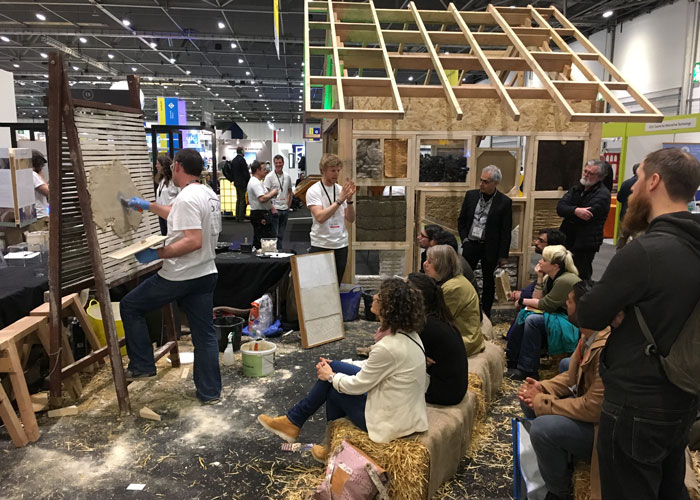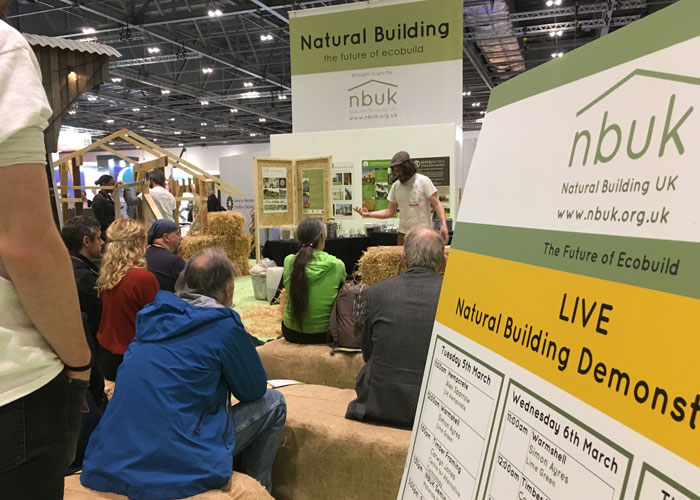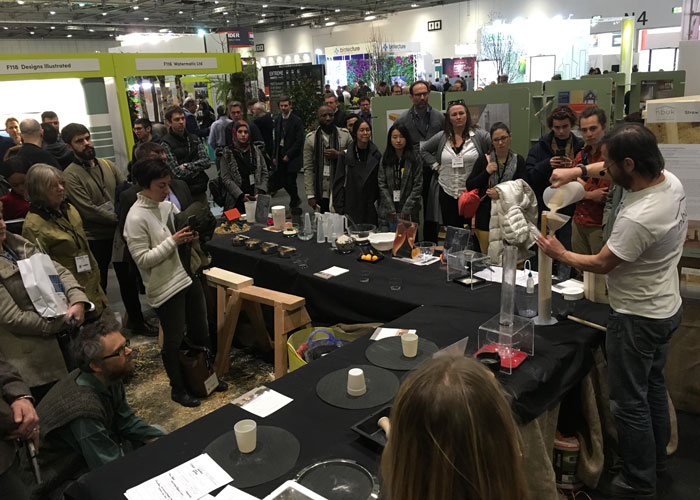Building with Nature
These unprecedented and troubling times of isolation and inactivity force us to seek out distractions and to look for signs of a positive future and with it, to reimagine how we might affect changes in the process of shaping that future.
The way in which we design and construct our built environments is perhaps towards the top of the list; after all, whilst the environment may be getting a well-needed break from a multitude of manufacturing processes across the globe, the effects of climate change are still a very real threat to humanity.

Visitors of Futurebuild, which took place in early March and may well be one of the last trade shows to take place this year, will have had the pleasure of experiencing the work of one of the show’s stalwarts; Natural Building UK.
The non-for-profit voluntary organisation comprises of a group of industry professionals who share common ethics and work with and promote the responsible use of natural materials in the construction of our buildings.
Participants include the likes of Grain Architecture, UK Hempcrete and the Centre for Alternative Technology and whilst forward-thinking, their approach is fairly simple; they share their specialist knowledge and experiences to help educate others in the use of natural, renewable and low embodied carbon materials. And whilst the list of materials they promote; notably Lime, Timber, Clay, Straw, and wool may have, until recently, seemed old-fashioned or even primitive, they do in fact offer a plethora of essential yet intrinsic properties that many of their artificial counterparts do not.

Take lime for instance – lime is created by kiln-burning an abundant natural resource – limestone. Whilst one can argue that this is a fairly high-embodied energy process, it actually requires far less than its successor Portland cement and because it cures inside a building once applied, it actually reabsorbs some of the carbon released during the burning process. What’s more, it’s a healthier solution as it allows the surface onto which it is applied to breathe, and it’s even fungal, pest, rot and water-resistant. As lime is generally used as a binder, plenty of other natural materials can be mixed in, not least hemp stalks or ‘shiv’. Hemp itself is not only a highly sustainable plant but also one that sequesters more Co2 than most other crops. Its woody stalks are made up of strong cellulose fibres that are generally discarded as waste by the agricultural community but make an ideal aggregate for Hempcrete. The thermal properties of this natural composite material make it a highly effective insulation material and one that can be supplied pre-cast or poured wet on site.
Timber is perhaps a more obvious example of the type of material that the collective advocate, and with good reason. If managed properly the cultivation of timber from trees is highly sustainable and once again, the process of doing so sequesters climate-altering Co2 from the atmosphere. We’ve long been felling trees, processing the trunks into timber and constructing buildings but there has been a steep upturn in the use of timber in the construction industry over recent years. This comes as no surprise to timber champions like NBUK and fellow Futurebuild exhibitor Trada, because timber is not only environmentally and sustainably sound; it is also broad and adaptable in its offering. There is, of course, the more obvious ability to create solid and relatively large structures but when left exposed or applied as a surface finish, timber also serves as an excellent biophilic material; natural and irregular grain added to the inherent warmth directly connecting us to nature. Like lime, timber is also increasingly used to help make our buildings more energy-efficient, in the form of recycled wood fibres that are used as an insulation barrier.

Insulating our buildings is not to be underestimated, not least because it helps to make our interior spaces more comfortable to inhabit but also because it assists in the controlling of the amount of energy required in heating and cooling them. As opposed to relying upon synthetic insulation materials composed of chemicals, NBUK are also advocates of utilising natural fibres to insulate. As well as hemp and timber there’s also wool, cellulose, cork as well as the possibility of recycled natural materials such as glass and cotton. That said there is also the option of constructing entire buildings from thermal regulating materials, notably clay, in a format known as earth building. The unique characteristics of clay make it a malleable material to work with and because it acts as a binder when wet, plenty of organic materials such as straw, as well as inorganic matter such as sand and gravel can be mixed in as aggregate. When clay dries out and hardens it offers a protective structure or shell and even helps to regulate liquid and gaseous humidity without the use of any mechanical extraction. No wonder that the UK has seen a gradual resurgence in earth (or cob) buildings during the 21st century.
As the number of designers, architects and construction companies considering how the creation of our built environments, as well as their continued use, will affect both the environment and their users increases, perhaps in the coming years we’ll see an even steeper increase in the use natural materials and building methodologies. One thing is for sure – NBUK will happily be on hand to help.




